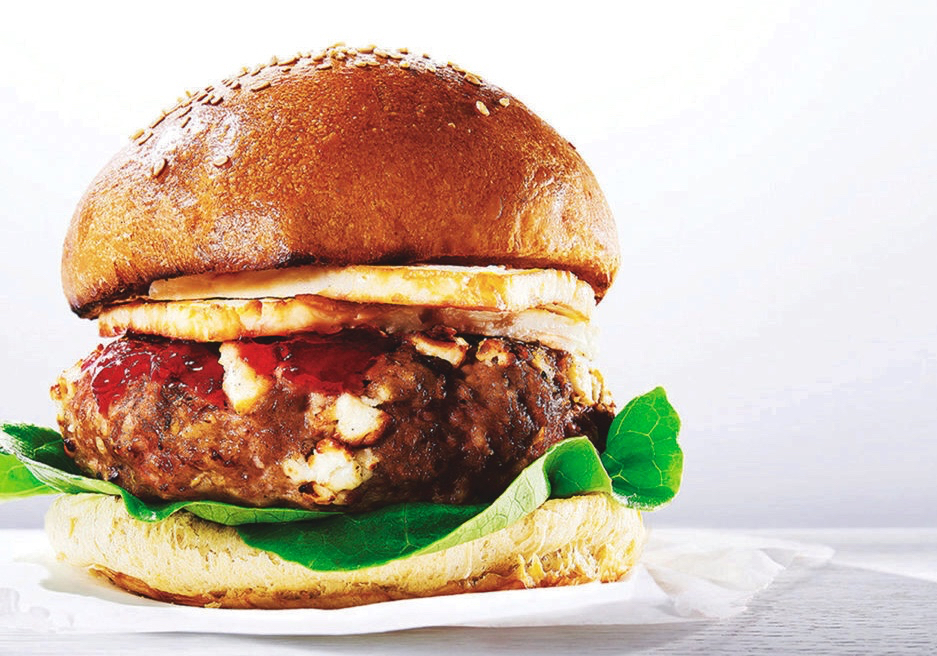That apple tree is amazing. Look at this apple! my 12-year-old daughter exclaimed as she held up a large, bright-red apple. She had just come inside after using our apple picker to pluck some of the brightest-red fruits high in the tree in our backyard.
We can make lots of things with apples, can t we? I said. I noted the bags of apples waiting to be consumed or given away.
Our family was making use of all sorts of devices to pick and process our apples. My daughter was turning the handle of our apple peeler-corer-slicer device, and ribbons of apple peelings were falling into the sink. I was making apple crisp with my seven-year-old daughter using my older daughter s peeled apples.
Read Also

Your best (and easiest) holiday dainty tray
Make-ahead recipes, store-bought goodies and co-operation with friends and family: Here’s how to throw together a stunning, low-stress tray.
We were using a steam juice extractor to make juice for apple jelly. Apple slices were in the food dehydrator and my husband had started a batch of apple wine in our fermenting equipment.
There are more than 7,500 varieties of apples grown worldwide and they often are used as the symbol of good nutrition. We ve all heard the apple a day keeps the doctor away rhyme. Is there any validity to it?
Turns out, many studies have revealed health benefits of eating more apples. Based on the research, however, we may want to put our apple peeler-corer- slicer devices aside at least sometimes and eat the skin as well as the rest of the apple. We probably want to drink apple juice more often, too.
Many cancer-fighting phytochemicals (plant chemicals) are concentrated in apple skin. Cornell University researchers showed that about three ounces of an unpeeled fresh apple provides the antioxidant activity of 1,500 milligrams of vitamin C.
Researchers have reported that regularly eating apples can help lower blood cholesterol, which in turn can reduce the risk of heart disease and stroke. University of California-Davis researchers reported that eating two apples or drinking 12 ounces of apple juice a day protected arteries from plaque buildup.
Other studies have linked eating apples to improving lung health by lowering the risk of developing asthma and lung cancer. Eating five apples per week was reported as the amount needed for the health benefits. Apples also may reduce the risk of prostate or colon cancer and diabetes.
Apples are a nutritional bargain. A large apple has about 130 calories, 34 grams of carbohydrate and five grams of dietary fibre. An apple also provides eight per cent of the daily recommendation for vitamin C.
Fibre-rich apples may help fill us up and therefore help with weight maintenance. In a study conducted in Rio de Janeiro, overweight women who ate the equivalent of three small apples or pears lost more weight on a low-calorie diet compared with those who did not include the fruit.
Enjoy more apples in particular and more colourful fruits and vegetables in general. Remember, adults should aim for about 4.5 cups of fruits and vegetables per day.
Whether you pick apples directly from a tree or buy them at a store or farmers market, pay attention to make the best selections. Choose firm, shiny, smooth-skinned apples without bruises or decay.
The National Center for Home Food Preservation has compiled several options to preserve apples, including making apple butter, drying slices, making jelly or chutney, and freezing apples. Visit http://www.uga.edu/nchfp/tips/fall/apples.html for links to the information.
Julie Garden-Robinson, PhD, L.R.D., is a North Dakota State
University Extension Service food and nutrition specialist and associate professor in the department of health, nutrition and exercise sciences.














